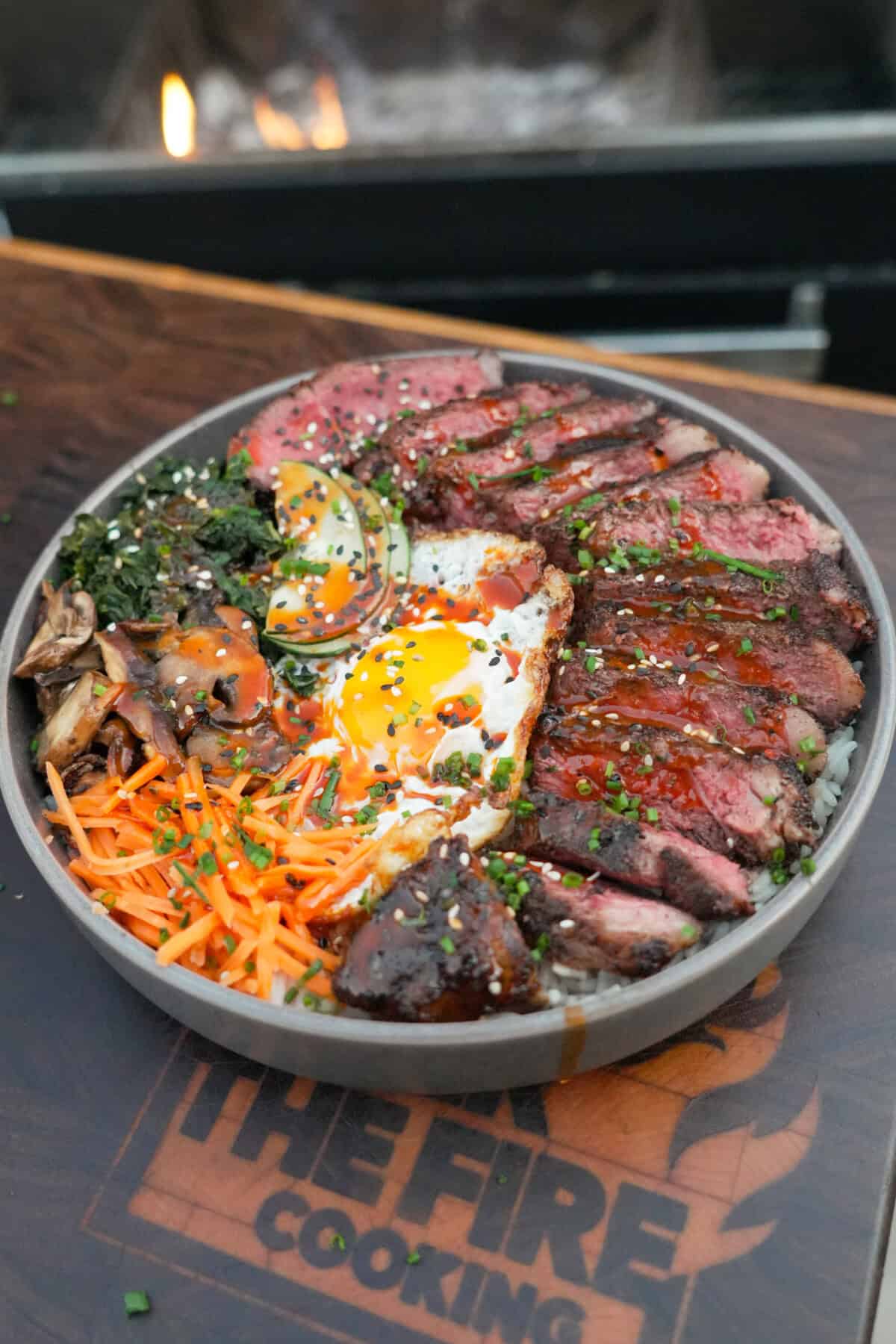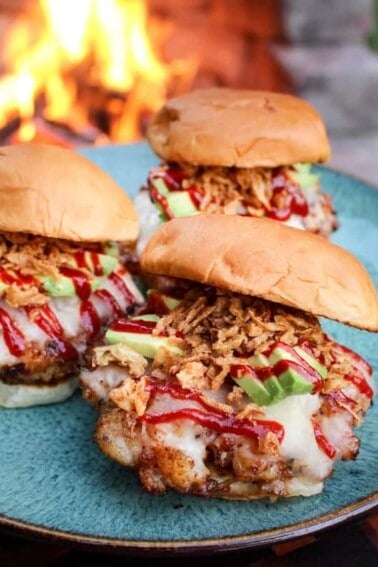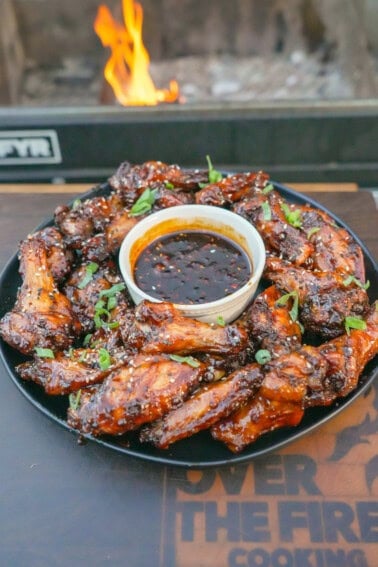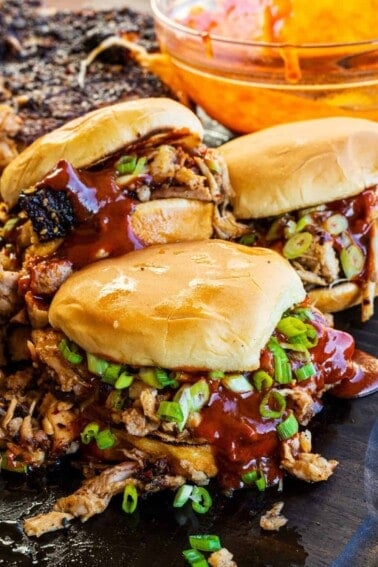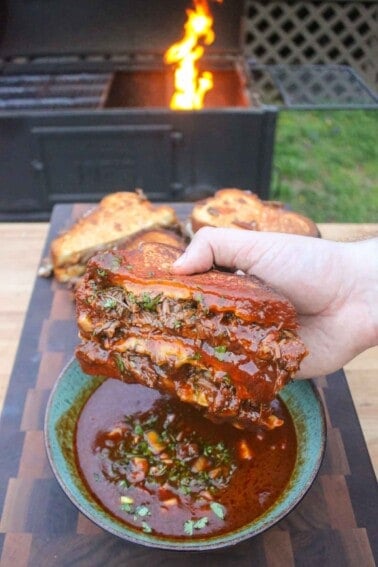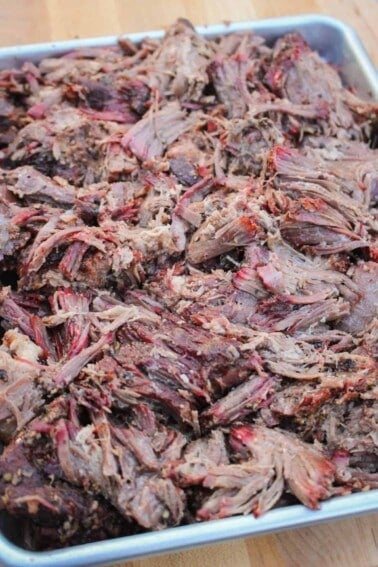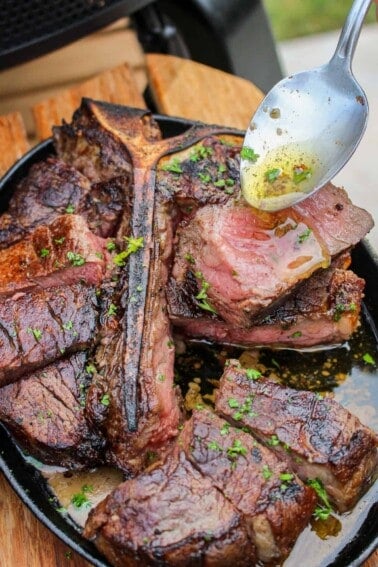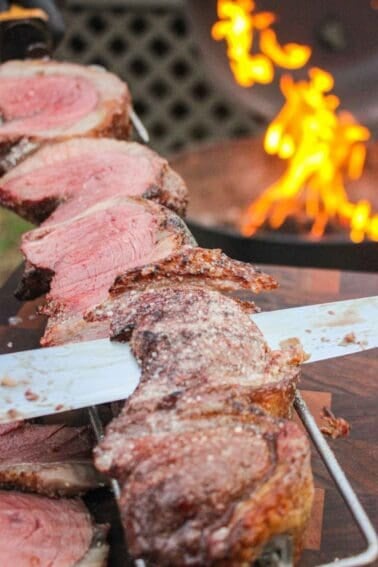I’ve got something brand new for you: steak bibimbap! Not gonna lie, I’ve never done anything like this before. And I am beyond stoked I decided to give something new a shot. This unique dish is fun and so freakin’ delicious!
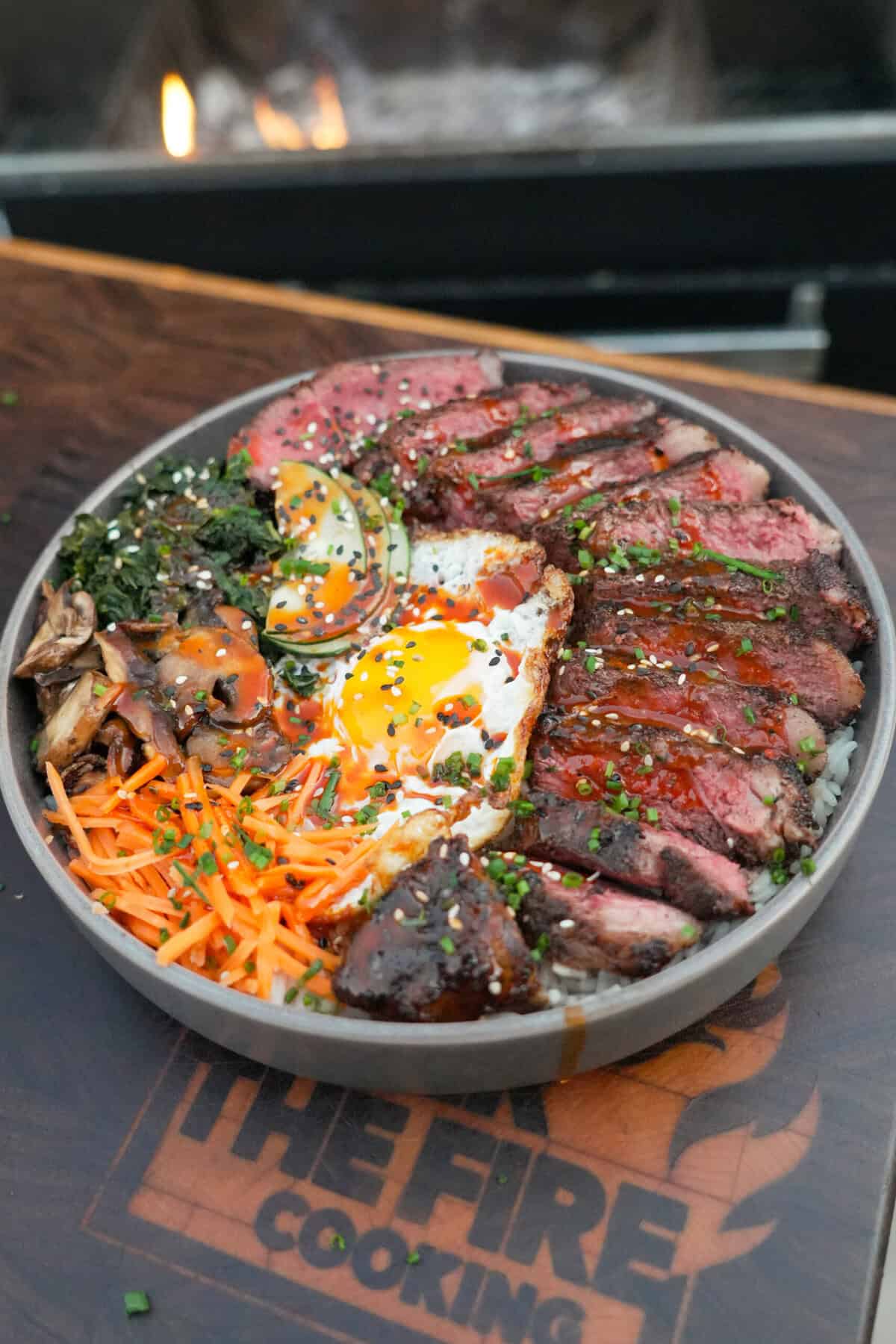
This recipe was inspired by Korean bibimbap, a traditional dish with a base of warm, crispy rice, topped with seasoned vegetables, protein and a spicy gochujang sauce. The word bibimbap literally means “mixed rice,” so there you have it. Typically, that protein is a sunny side up egg and marinated beef. I followed that tried and true approach here and loved every bite.
Why You’ll Love Steak Bibimbap
A rice bowl is the perfect comfort food. Plus, when it’s topped with meat, eggs, a mix of vegetables, and sauce, you’ve got your full meal ready to go in one dish. When I saw bibimbap for the first time, I knew I had to give it a try on the grill. Hot stone bowls full of amazing Korean flavors and spicy sauce? Must. Cook. Now.
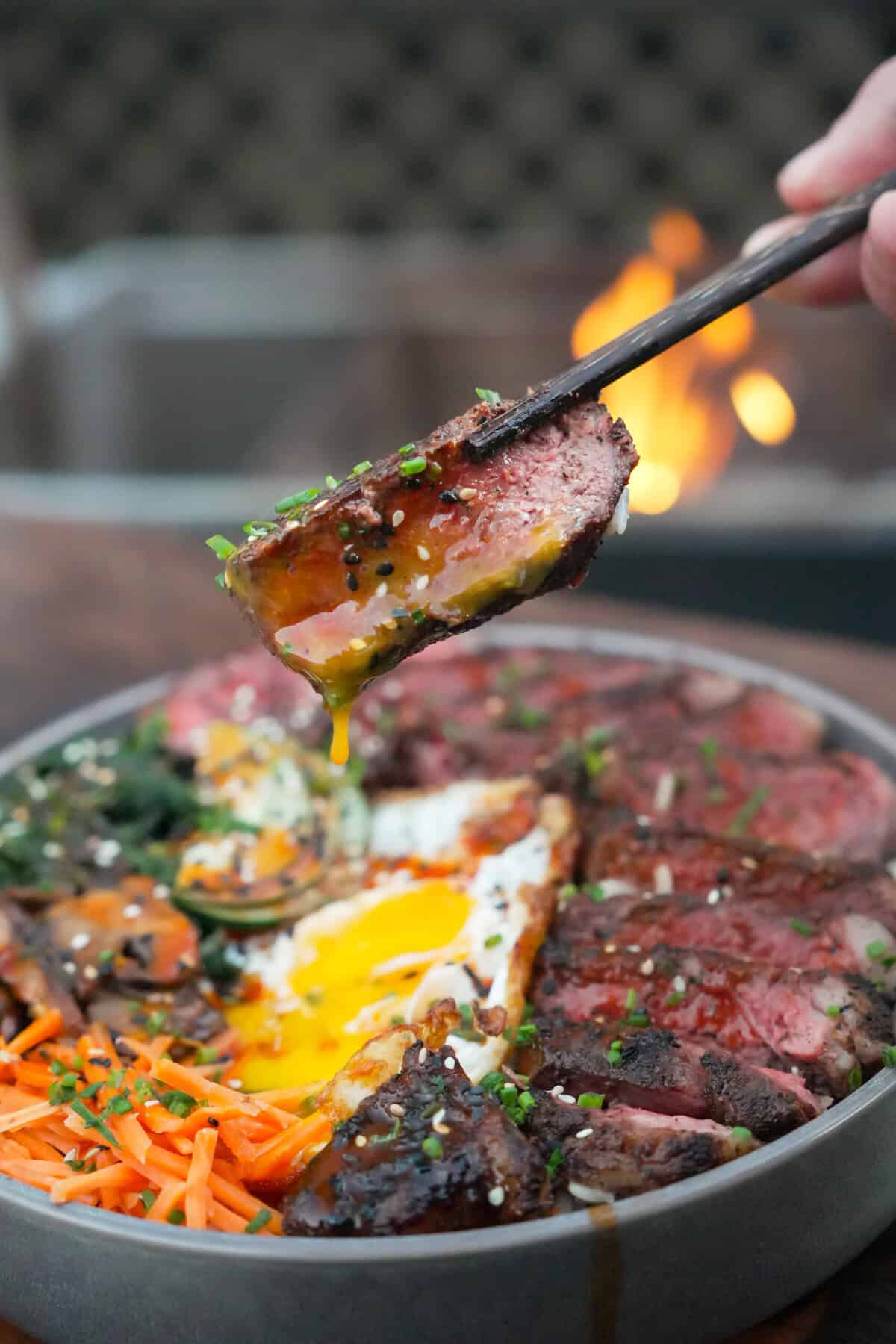
Beef is a classic choice for both bibimbap and my backyard, so I went with a juicy ribeye as our cut of meat atop the rice. Since my Cowboy Butter Seasoning has a range of barbecue flavors (and Korean BBQ is so freakin’ delicious), it complements the other flavors in the bibimbap really well. It may not be authentic Korean food, but I think you’ll still enjoy it.
The variety of crunchy vegetables, like cucumbers and carrots, and tender veggies like cooked spinach and mushrooms, give this steak bibimbap an incredibly dynamic texture. Top it all with spicy-sweet gochujang sauce — which we make extra sweet with honey! — and this will be a dinner you’ll want to have on repeat.
Looking for more rice-based dishes? Check out Shrimp Fried Rice, Steak Fried Rice and Umami Ribeyes with Steakhouse Fried Rice.
Steak Bibimbap Ingredients
- Steak: Grab a large ribeye or strip steak and some of my Cowboy Butter Seasoning for this step.
- Rice Bowl: We’ve got a perfect combination of rice, fried egg, spinach, carrots, mushrooms, cucumbers, sesame seeds and chopped scallions.
- Bibimbap Sauce: This freakin’ delicious sauce adds an extra layer of flavor to our rice bowl. Gochujang is your essential ingredient, and we’re adding in sesame oil, honey and water to get the right consistency.
Korean Cucumber Salad
If you order bibimbap at a Korean restaurant, it’s usually served with a spicy cucumber salad called oi michum. Here’s an easy way to make it at home. Slice 2 large cucumbers into 1/4-inch thick pieces. Then, toss with 2 minced garlic cloves, 2 tablespoons gochugaru (these are Korean red pepper flakes, different than the gochujang we’re using in the bibimbap sauce), 1 tablespoon soy sauce, 1 tablespoon sesame oil, 1 tablespoon rice vinegar and 1 teaspoon sugar. Add in some chopped scallions and sesame seeds, then stir again.
You can let it sit for five minutes to let the flavors meld, or dig in right away. Enjoy with this bibimbap or some of my other recipes that feature Korean flavors, like Honey Korean Gochujang Wings or Maple Gochujang Rotisserie Ribs.
Bring the Flavor Home

How to Make Steak Bibimbap
In a bowl, mix together your ingredients for the bibimbap sauce: gochujang, sesame oil, honey, and water to get it to your preferred consistency. Set to the side.
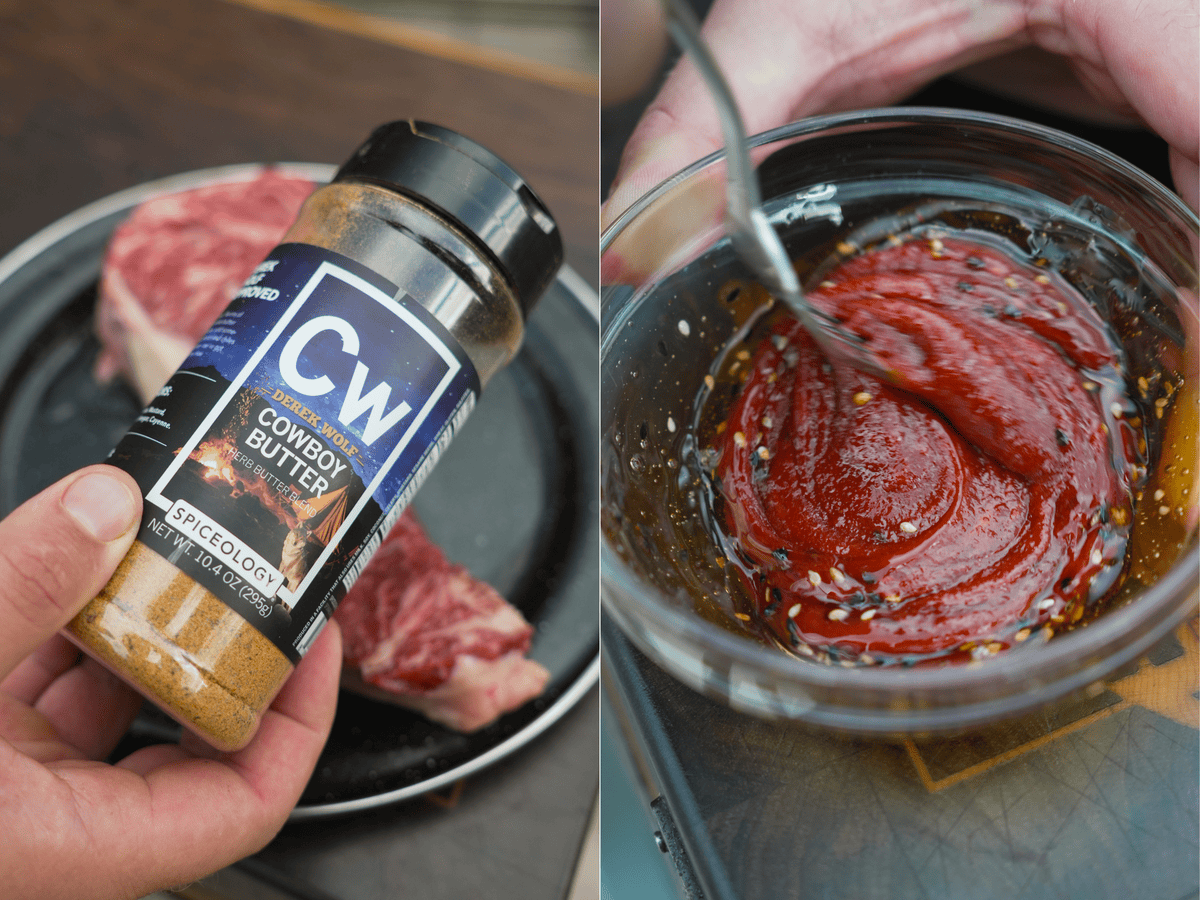
Next, preheat your grill to medium-high heat (about 350 degrees Fahrenheit). Slather your 1 large ribeye or New York strip steak in oil and generously season with my Cowboy Butter Rub. Cook the steak for 6-8 minutes per side, until the internal temperature reaches 120 degrees F. Baste the outside of the steak with the bibimbap sauce occasionally. Once done, pull the meat off the grill and let it rest.
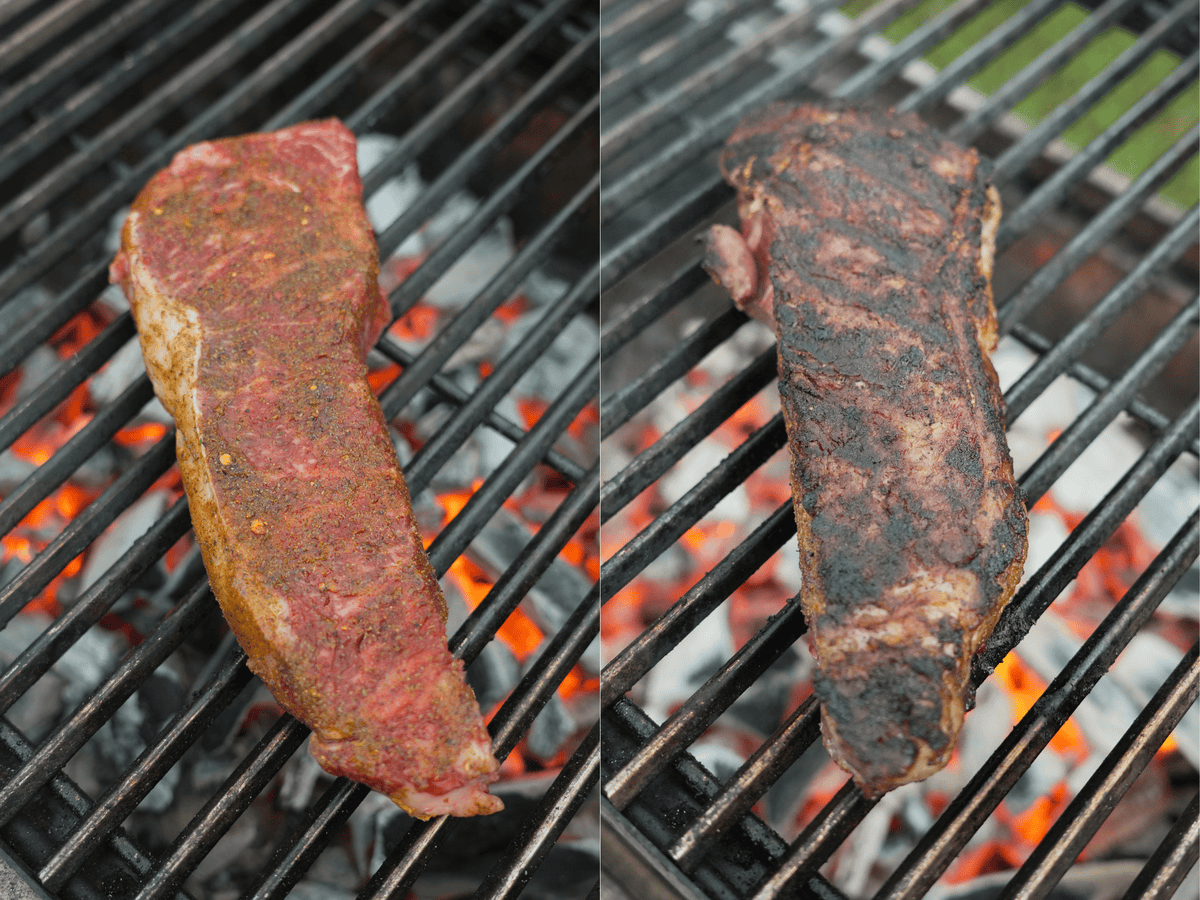
To cook the mushrooms, place a cast iron skillet on the grill and saute your mushrooms. Add some soy sauce and salt to these before pulling off. Finally, fry one egg to your preferred doneness and pull off.

Add your cooked rice (I’m using white rice here, but you could use brown rice too) to the center of a bowl. Using a sharp knife, cut the steak up into very thin slices, then add to the bowl with cooked spinach, finely sliced carrots, mushrooms, sliced cucumbers, egg and bibimbap sauce.
Garnish with scallions or chives and sesame seeds. Serve and enjoy this delicious dish!
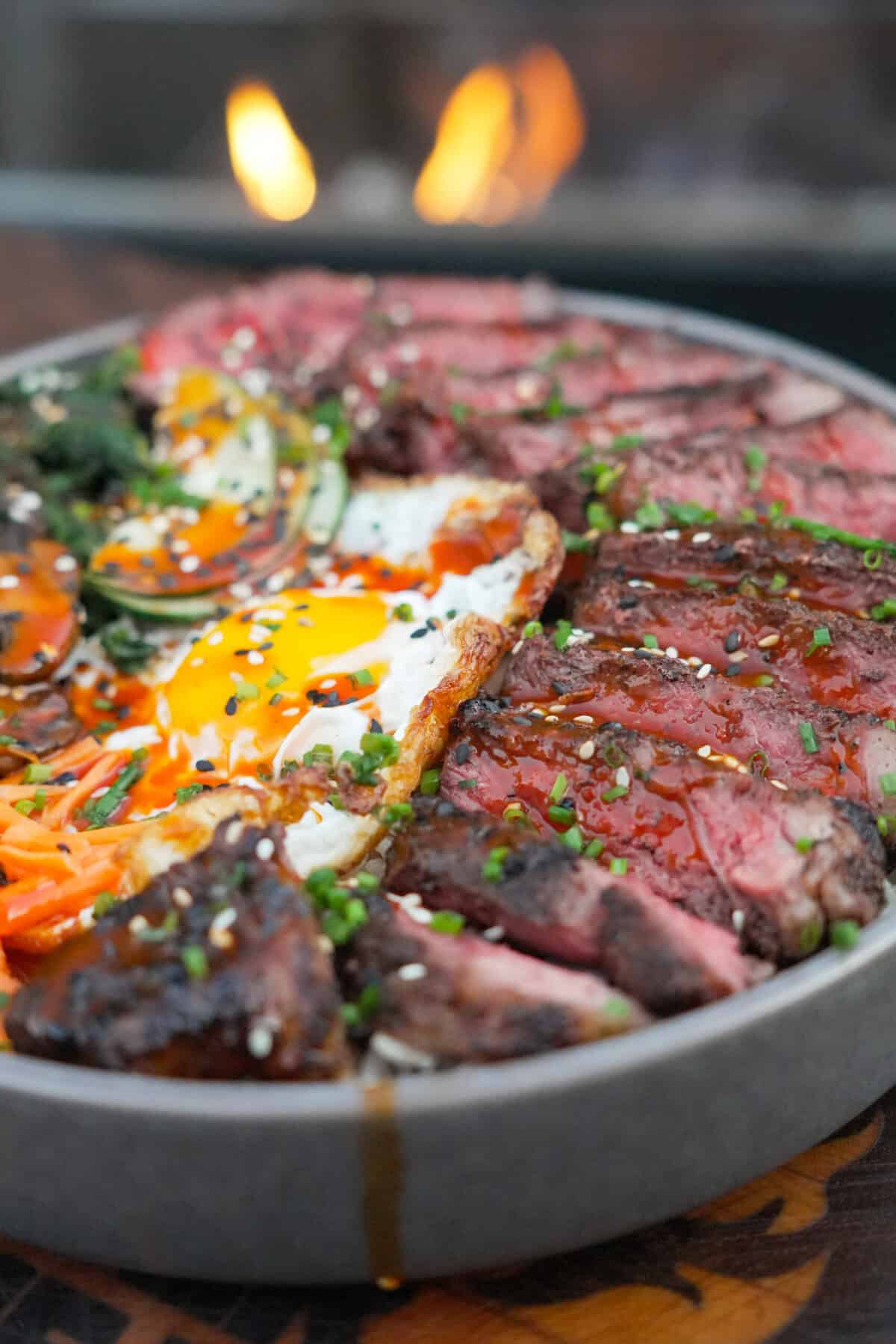
What to Serve with Steak Bibimbap
This rice bowl is a complete meal in itself! If you go to Korean restaurants, they’ll serve bibimbap with sides of kimchi and vegetable salads, like the cucumber salad in the tip or a broccoli salad. Give these a try with your steak bibimbap, alongside a cold beer.
Leftovers and Reheating
If you’ve got leftovers, store the various components in separate airtight containers (steak in one container, rice in another, veggies in the last) in the fridge for up to 3 days. The bibimbap sauce will keep in the fridge for up to 2 weeks. When you’re ready for another round of bibimbap, you can reheat everything on the grill or stovetop in the skillet over medium heat.
Bring on the Gochujang
FAQs
Gochujang has gotten a lot more popular, so you can find it in Asian grocery stores and most large supermarkets. Once you have a jar, you’ll find plenty of ways to use it!
Shiitake mushrooms work great here! But if you’re in a pinch, whatever you have on hand will be freakin’ delicious with this steak bibimbap.
Definitely! You could use super thin slices of sirloin steak, skirt steak, flank steak, or even ground beef if you’re not in the mood for steak.

Get The Cookbooks!
Flavor X Fire & FOOD X Fire
All the major tastes—salty, sour, sweet, bitter, and umami—are explored in depth, along with an investigation of other components you should consider when it comes to flavor, such as aroma, heat, and texture.

Steak Bibimbap
Ingredients
Steak:
- 1 Large Ribeye or Strip Steak
- 2 tbsp Cowboy Butter Rub
- Neutral Oil as needed
Bowl:
- 1 Fried Egg
- 2 cups Cooked White Rice
- 1 cup Cooked Spinach
- ½ cup Carrots finely sliced
- ½ cup Mushrooms sliced
- ½ cup Cucumbers sliced
- Sesame Seeds garnish
- Chopped Scallions or Chives garnish
Bibimbap Sauce:
- 2 tbsp Gochujaung
- 1 tbsp Sesame Oil
- 1 tbsp Honey
- Water to consistency
Instructions
- In a bowl, mix together the bibimbap sauce and set to the side.
- Slather the steak in oil and generously season with my Cowboy Butter rub.
- Add to a medium high heat fire (about 350F) for 6-8 minutes per minute until 120F internal. Baste the outside of the steak with the sauce occasionally. Once done, pull off and let rest.
- Add a cast iron skillet and saute the mushrooms. Add some soy sauce and salt to these before pulling off.
- Finally, fry one egg to your preferred doneness and pull off.
- Add the cooked rice to the center of a bowl. Slice the steak up then add to the bowl with spinach, carrots, mushrooms, cucumbers, egg and bibimbap sauce.
- Garnish with chives and sesame seeds. Serve and enjoy!
